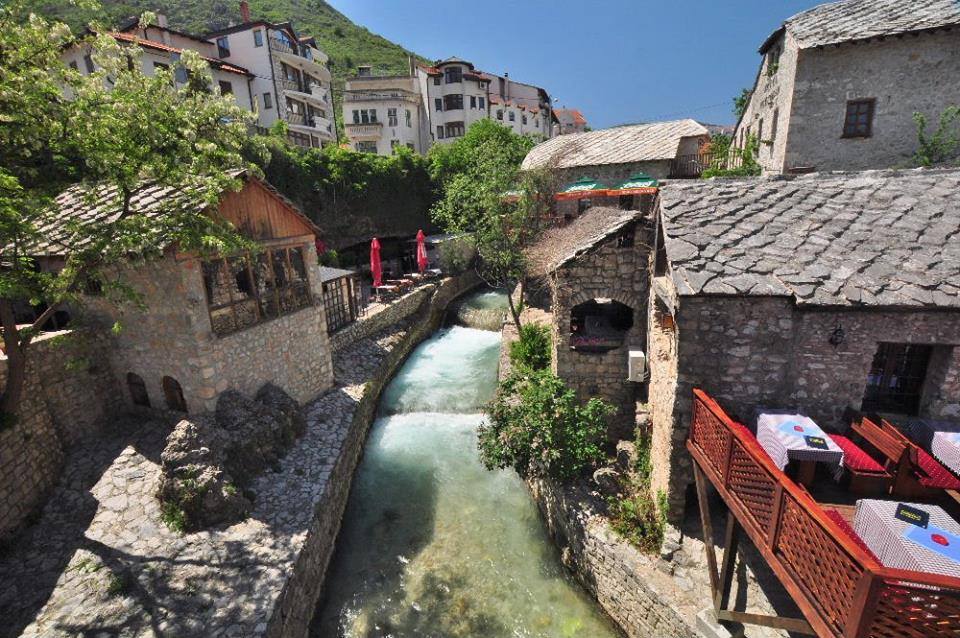As if by chance, the first link in a chain of my whimsical stories had Mostar as its protagonist. And as if by an even greater chance, the story about Mostar, once the symbol of fraternity and unity, love and redness, was written on the Labor Day.

By: Vedran Jakupović
My experience of Mostar is not and cannot be an objective one. I am half from this city, I have seen both good and less good times in Mostar, and along with it I watched all the ‘’pre-war James Bonds’’ with pulled down roller shutters at +45°C in shade. I also drank liters of Cocta on Rondo square and successfully battled with the mayonnaise which is spread here with a spoon onto a pizza.
A land stolen from the stone
May in Mostar, and most probably in other towns as well, is the most beautiful of months.
Every year, on the second Saturday of May, Blagaj is a host to a great number of Muslim believers during the days of Mawlid celebration and Dhikr. One beautiful religious tradition is ‘’spiced up’’ with an indescribable event. Indescribable is the only appropriate word because those who don’t experience it, haven’t experienced anything yet.
Restaurant owners are preparing for it in every possible way, construction works on the stands are completed and the service follows the believers closely. It is the time when Blagaj becomes the center of Bosnia and Herzegovina.
And Mostar for its part has its Old town (Stari grad) on the UNESCO list; the Old town morphs into mahala, a Turkish word for neighbourhood. They, unlike other mahals, are in flat parts of the town, along the Neretva banks. The mahala continue, up the Liska street, into the beautiful Austro-Hungarian part of the town which starts from the Rondo and spreads across the park and the Old Gymnasium, all the way to the Radoblja river, where legend says Zuko Džumhur was sitting in a café and asked a waiter to change the music. Upon hearing that, the waiter rolled up his pants, got into the river and changed the position of the stones in the Radoblja.

A long alley leads to Podhum, the only Mostar’s mahala which continues up a hill.
At the town’s north entrance one can see orchards and vineyards. The same beautiful scenery can be encountered at the south exit, in the direction of Blagaj—a land stolen from the stone.
The lavender colors the field along the airport an intense kind of violet.
The bicycle riding cult
On second thought, it is good that this valley is associated with the red hot stone. It is good it is associated with that one drop of sweat obstinately standing on the forehead and not going away since it has nowhere to go. Even it has to bask in the sun.
It is better that it be associated with the heat of the summer than with the Mostar’s winter; it is the time when the brisk north wind reaches through all the layers of one’s clothes and body up to the bone, or when Mostar’s rain falls incessantly. Nowhere have my legs been as wet as they were in Mostar.
Were it not for the summer heat, the bicycle riding cult would have been non-existent in Mostar. Both young and old, and especially the old, are not coming off of their bicycles. Once they can no longer ride, it means the time has come for them to lie down and wait for Azrael, the Angel of Death. And even Azrael has to slow down a bit in Mostar because a killing heat.